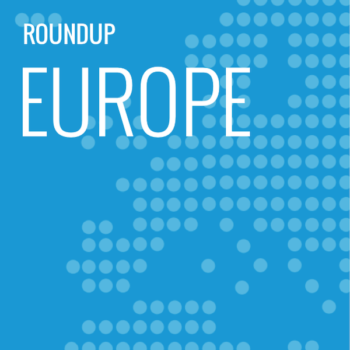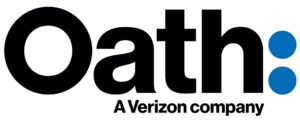Yahoo & AOL to Become Oath; Superawesome Launch Content Targeting Tool
by Sonja Kroll on 7th Apr 2017 in News

ExchangeWire round up some of the biggest stories in the European digital advertising space. In this week’s edition: Yahoo and AOL will become Oath; Content Targeting tool aimed at kids by Superawesome; New optimisation platform by Sticky; Tabmo-Teads integration; OMS monetises with Triton Digital; Wochit and AFP partner; Mozoo introduces new mobile video format; and Regional publishers support local news brands.
Yahoo + AOL = Oath
While the completion of Verizon’s acquisition has been dragging on for several months, not least because of Yahoo’s failure to deal with the 2013 and 2104 data leaks in a transparent manner, the transaction seems to have moved forward behind the scenes. Some details of the impending acquisition have already leaked, including the planned merger of Yahoo with Verizon’s internet arm, AOL.
The new internet company, in which Yahoo's core businesses search, mail, ad tech, and content will merge with AOL, will be called 'Oath' – as disclosed by AOL CEO Tim Armstrong in a tweet, accompanied by the new company’s logo.

AOL tell ExchangeWire that Oath will be an umbrella company for over 25 media and technology brands, among them The Huffington Post, AOL.com, Makers, and Build Studios. Post-merger with Yahoo, brands like Yahoo Finance, Yahoo Sports, and Yahoo Mail will join the portfolio.
However, the Yahoo and AOL brands will not vanish. Much like Google’s Alphabet, Oath will provide the umbrella under which various media and brands operate – including future investment in the various brands.
According to industry insiders, the new venture will be headed up by AOL CEO Tim Armstrong. Yahoo’s Marissa Mayer does not seem to be involved in Oath.
Superawesome launch Content Targeting tool
Kidtech company Superawesome are launching a new product. Dubbed 'Awesome Content Targeting' (ACT), the machine-learning platform promises to provide deeper understanding of what content kids are engaging with – and ensures that all ads are COPPA-compliant and fully audience-appropriate.
The COPPA- and GDPR-compliant platform analyses billions of individual pieces of kids’ content across the marketplace, in order to provide safe new revenue streams for content owners, while offering safe engagement options for advertisers.
The tool may also be interesting against the backdrop of the raging boycotts of publishers like Youtube by advertisers: “Our SAFE AD initiative has always ensured the highest standards of data privacy and appropriate content in kids' digital engagement”, says SuperAwesome CRO, Jeff Imberman. “Now we can go one step further with our Awesome Content Targeting by guaranteeing that brands will never be seen next to inappropriate content.”
Sticky introduce new optimisation platform
Ad valuation is getting a new currency. Sticky’s latest optimisation platform, dubbed 'AdVantage', is taking on viewability with a new metric – how long someone actually views an ad. Based on "time engaged and percent of an ad seen", AdVantage is to help publishers, brands, and agencies determine the best placement for their ad.
ExchangeWire asked Sticky’s chief business officer, Nitin Gupta, how the new metrics work: “Time engaged is defined as the measured time that a user's eyes spend directly looking at an ad. This is starkly different from a standard impression because, in this case, we are flipping the measurement not to be reliant on the serving entity (web server, content, or browser) but, instead, we're measuring the observing entity (the user/reader). Engagement with content is what predicts action. The longer someone engages, the more they can absorb and, hence, recall at a later time. This recall has the highest correlation to user intent, much more than clicks, impressions, and even viewability. For brands that are not selling online, yet want to build a strong mental reference with the customer, there is no better metric out there; and now they can measure it.”
So, how does Sticky measure the engagement of the users? Nitin Gupta comments: “If you think about it, our eyes are the first 'input' channel for content. From our eyes, information travels to the brain, and then we instruct our hands to do clicks or scrolls as we engage with the content. What Sticky measures is that first point of engagement. We do it by tracking the users eye movement through their webcam. These are users who have opted in to have their eyes tracked.”
According to Gupta, the advantage of knowing the exact percentage of an ad seen, is determining how effective the ad has been: “The challenge with most brand advertising has been that most measurements and metrics don't take into account what the actual viewer is looking at or feeling. We have traditionally been exposed to metrics like impressions, clicks, etc. that have not correlated well to intent. By measuring Time Engaged and Percent Seen, advertisers get a new set of metrics that assist with decision making on creative selection, campaign execution, and media placement.” This, Gupta says, will help advertisers conduct new types of A/B testing. “Logo positioning, colors used, text size, text capitalisation, etc. all make a significant difference in the way the message is received. AdVantage allows you to measure all that.”
AdVantage has already been tested by a number of large advertisers for image, video, HTML5, and animated GIF ad formats.
Tabmo and Teads integrate
Teads integrates with Tabmo’s mobile creative DSP for video, display, and native advertising. Enabling trading desks, agencies, and advertisers to access to all Teads premium publishers and inventory on mobile devices, the mobile programmatic platform manages both the entire purchasing process and the broadcasting of mobile advertising campaigns on mobile devices in real time.
Todd Tran, head of mobile and programmatic, Teads comments: “More and more advertisers are seeking video formats that are truly cross-device, viewable, engaging, and in premium editorial environments. Together with Hawk, we’ll be able to meet this rising demand with outstream video.”
OMS monetise with Triton Digital
Audio technology provider Triton and Dutch radio sales house OMS are working together to monetise and stream OMS’s online audio content.

Joris van der Pol, General Director, OMS
Through the partnership, OMS want to leverage Triton’s Content Delivery Network to stream their radio and internet music stations to listeners throughout the Netherlands. Using the Triton Advertising Platform, Tap Live, OMS are monetising the programs and, at the same time, become accessible to advertisers through Triton’s global digital audio marketplace, a2x.
OMS are the first radio broadcaster in the Netherlands to provide dynamic advertising on live radio streams. “By offering unicasting on digital audio, we provide new forms of targeting for advertisers, such as geo, time and device”, Joris van der Pol, General Director, OMS, tells ExchangeWire. “We look forward to working with Triton and to expanding that offering to include programmatic audio inventory.”
Wochit partner with AFP
Wochit are entering a long-term partnership with AFP (Agence France-Presse), the French news agency, which will bring the latter’s media assets to Wochit’s library of video assets.
Using the Wochit platform, the multi-year agreement allows publishers and media brands to incorporate content from AFP into videos. This additional content, available in Wochit in real-time, further supports publishers’ need to rapidly post timely video around trending topics to engage audiences.
“We welcome this new partnership with Wochit, which will empower media companies through the combination of AFP’s videos and the social video creation platform’s powerful tools. With the wealth of high-quality video that can be easily packaged into engaging and compelling stories, we are helping fulfill the need to provide customised videos in real time,” said Stéphane Marcovitch, AFP global sales and marketing director.
Mozoo promise 100% viewability
A new mobile video format by Mozoo combines three types of ad unit in one, promising 100% viewability and an innovative non-intrusive user experience.
This is how it works: instead of disappearing, Mozoo’s Out-roll ad stays in view as the user scrolls down the page. Non-invasive in-content video is displayed in the bottom right-hand corner on the user screen, with the video running without interrupting content consumption. The new format combines in-content video, smartfooter video and immersive interstitial into one single ad-unit.
Mozoo say that an immersive interstitial ad will only be displayed once the user has finished reading the page. This is to allow the consumer to interact with the brand as they choose while not interrupting their content experience.
“As video advertising spend continues to rise, the market is becoming more cluttered and achieving cut-through, without alienating their consumer base, is a big challenge for publishers”, explains Max Pepe, marketing director at Mozoo.“ While in isolation the most popular video ad formats (in-content, pre-roll, and interstitial) have their advantages, they also have weaknesses. This is why we created Out-roll by taking what works best from each format, addressing what doesn’t, and blending it into the one product so that publishers and advertisers can benefit from a streamlined approach to mobile video advertising.”
Regional publishers promote local news brands
Regional publishers in the UK are calling on national advertisers to use local news brands. In an open letter signed by 24 of the UK’s regional publishers, the publishers are reacting to the problem of extremist content and fake news connected with Google and Facebook.
Labelling programmatic an “ad-buying trap that is leading to household brands being placed alongside extremist, unsafe, and fake news content”, the established regional publishers highlight how local news brands provide a trusted, safe, and highly responsive ad environment.
The open letter points out that local news brands publish quality content that is regulated by the Independent Press Standards Organisation (IPSO), which provides advertisers with the peace of mind that comes with a safe advertising placement. Acknowledging that advertising helps to fund local journalism, the local news brands are hoping for advertiser support.

Scott Gill, MD, 1XL
The open letter is accompanied by an online advertising charter. Speaking to ExchangeWire, Scott Gill, managing director of 1XL, a publisher partnership that offers advertisers access to local news brands across the UK and Ireland, says that the charter details and reaffirms the principles by which the publisher cooperative abides. “With this charter, we wanted to remind buyers that our audiences are real people, and that our sites exist for these people and the communities they live in. We also wanted to remind buyers that we can do more when they trade with us directly – whether that be on an IO basis or through a PMP. We hope that other premium publishers will follow suit, as we are all being penalised in the current ecosystem.”
Gill acknowledges the difficulties of media buying: “Buyers have it hard, on the one hand. Agencies need to buy at scale, and cheaply, which has resulted in brands’ messages appearing in less-desirable environments. When trying to put the right ad in front of the right person, at the right time, at scale, programmatic platforms provide efficiency – but they won’t always make the same decisions as a human, especially when there is so much noise in the ecosystem (fake news, bots, and sites that only exist for advertising).” Thus, 1XL are appealing to publishers to come together and put pressure on less transparent platforms/SSPs and introduce a recognised and endorsed system of inventory quality.








Follow ExchangeWire